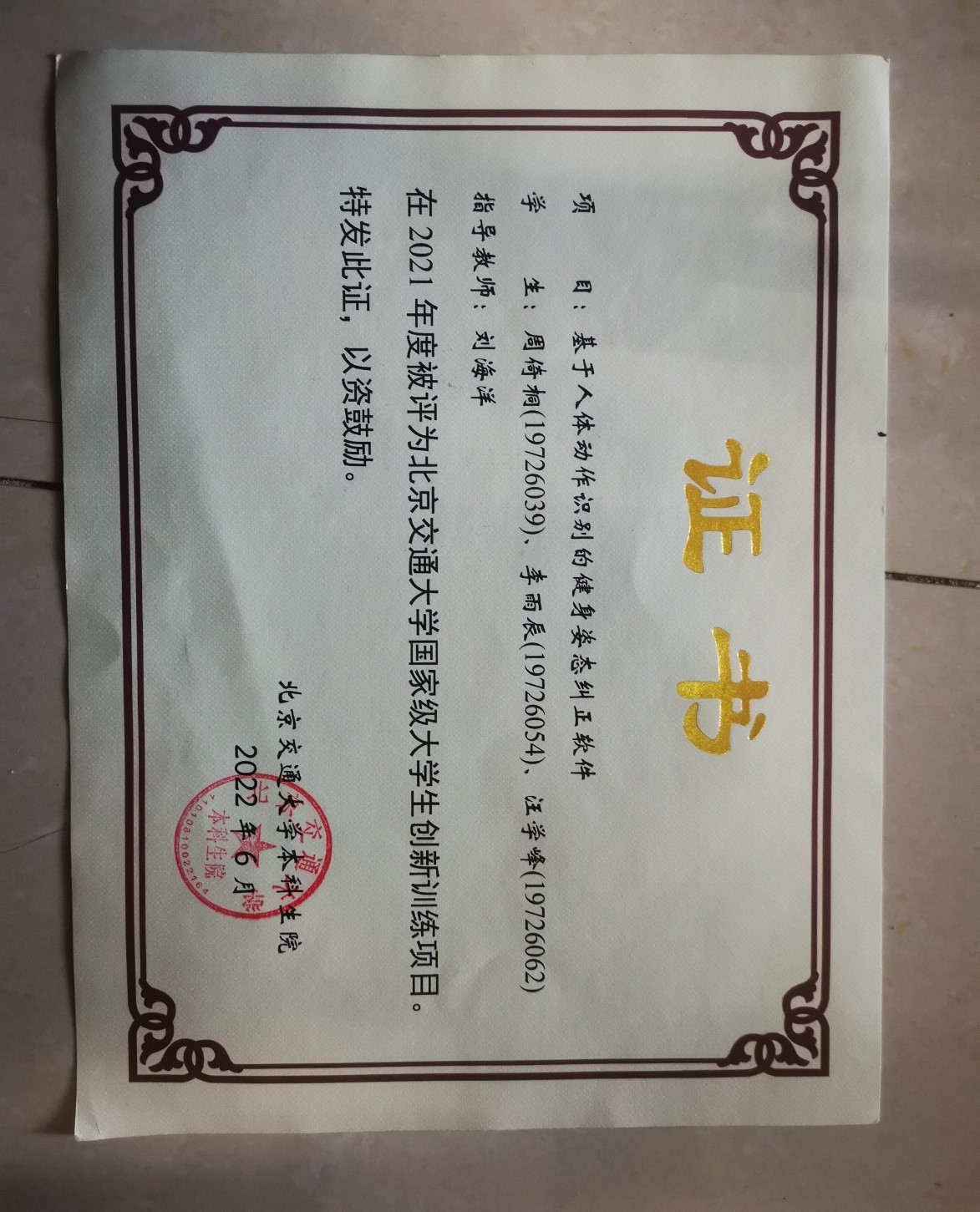Health is one of the topics that people are most concerned about. The standard of fitness movements is an important factor that affects the quality of fitness. In response to this situation, we’ve developed a mobile application with fitness motion correction and counting functions. It can act as a fitness coach for users, which is committed to helping users calculate exercise volume, correct fitness posture, and provide fitness advice to achieve intelligent and scientific fitness.
Project Team Members
Zhou Yitong, Class of 2019, Computer Science and Technology
Wang Xuefeng, Class of 2019, Computer Science and Technology
Li Yuchen, Class of 2019, Computer Science and Technology
Project Advisor
Liu Haiyang
Recommended Level
National Level
Project Introduction
Health is one of the most important topics of concern. For fitness, the correctness of exercise movements is a crucial factor affecting the quality of workouts. In response to this, we aim to develop a mobile application with fitness movement correction and counting functions. It can act as a fitness coach for users without professional guidance, helping them calculate exercise volume, correct fitness postures, and provide fitness recommendations, enabling intelligent and scientific fitness.
Experimental Process
The project work can be divided into four parts. First, human posture recognition was implemented based on the BlazePose model. Second, with the help of professional coaches, the collection and training of movement datasets were completed, and a movement recognition model was established to achieve movement classification. After recognizing different movements, the similarity of movements was compared by constructing an overall joint confidence curve. To achieve dynamic real-time counting and correction functions, the team used joint distances and angles as movement features to build global and local movement evaluation models. Finally, mobile deployment was completed.
Features and Innovations
First, the project achieves real-time dynamic counting through peak curves. Second, the model has high real-time performance and generalization capability. Finally, we implemented correction and counting functions on the mobile platform. Existing mobile fitness applications lack true human posture recognition, while similar projects often lack counting and correction functions. Designs with similar functionalities, such as fitness rings, require expensive equipment, making them inaccessible to the general public. This project, characterized by low cost, high accuracy, and immediacy, can count fitness movements and correct postures, holding broad development prospects.
Project Outcome
Software


